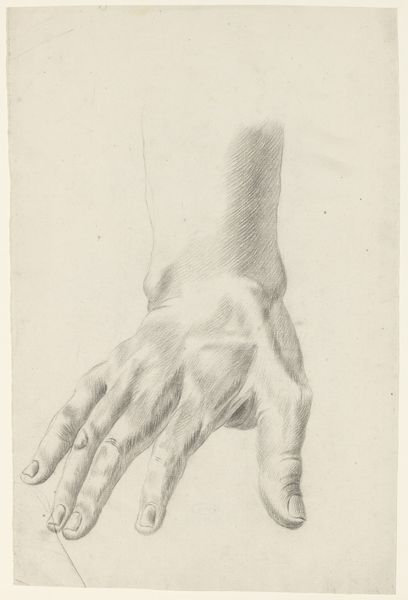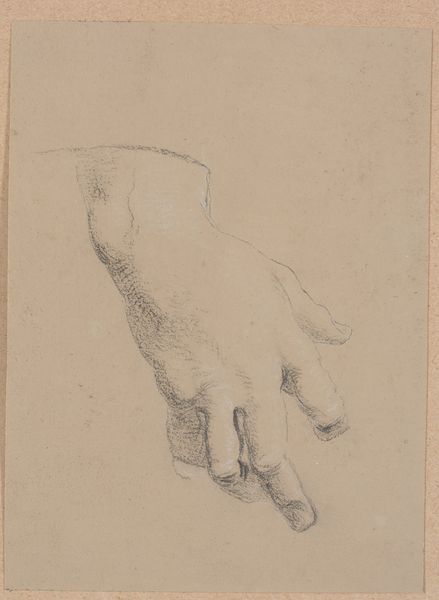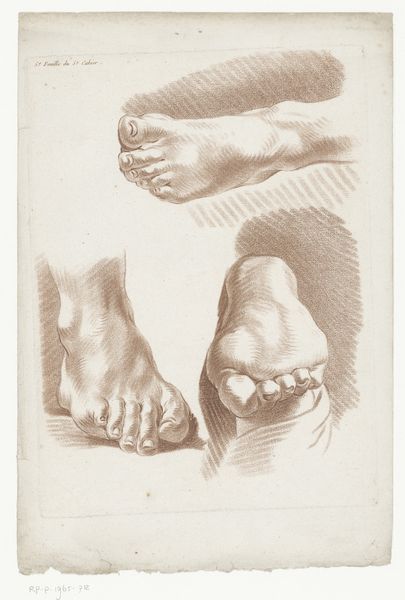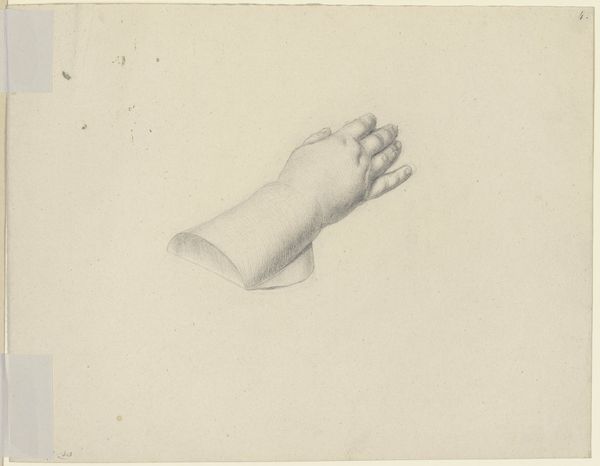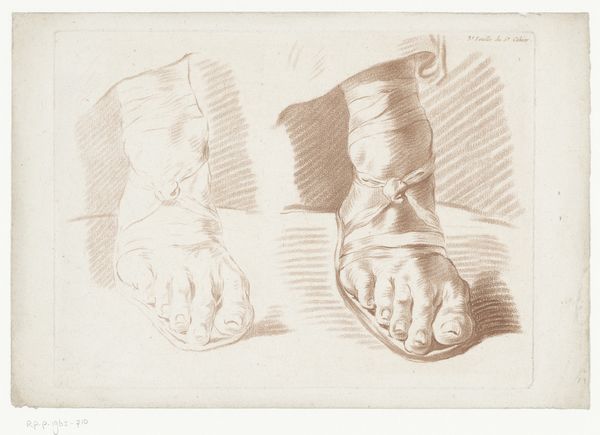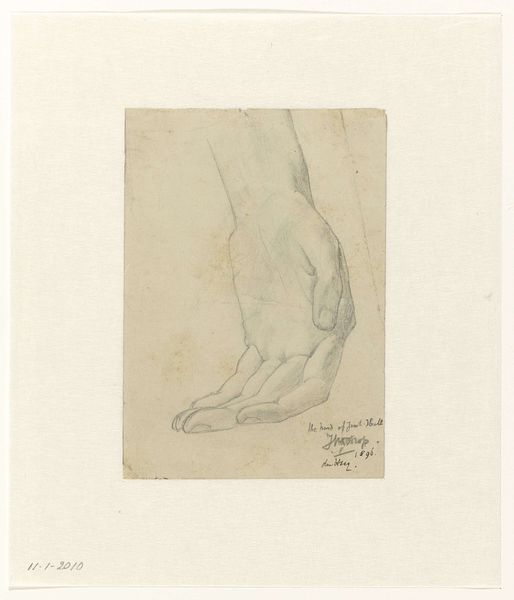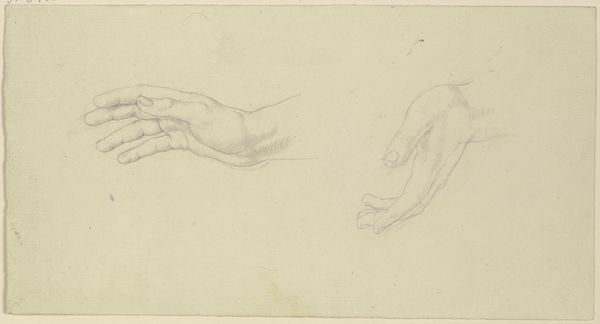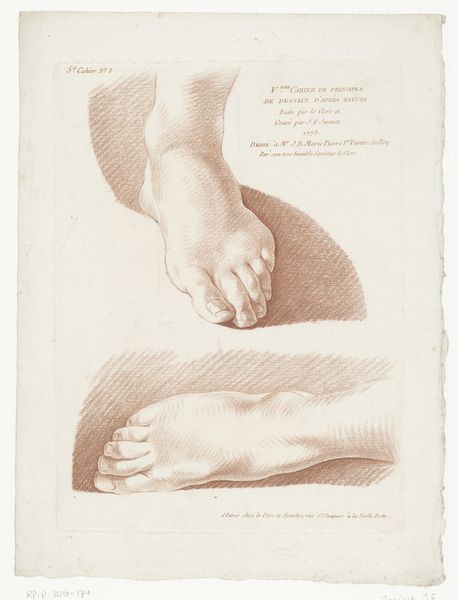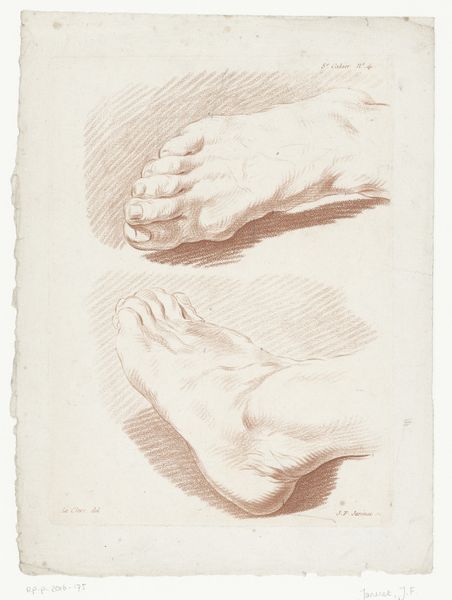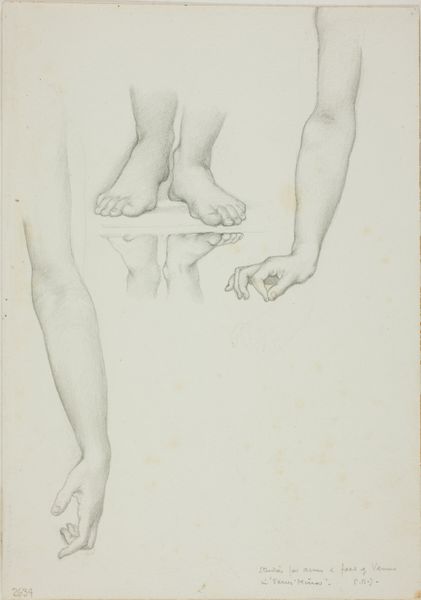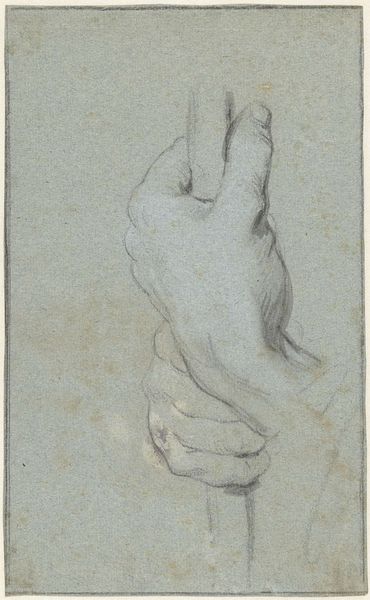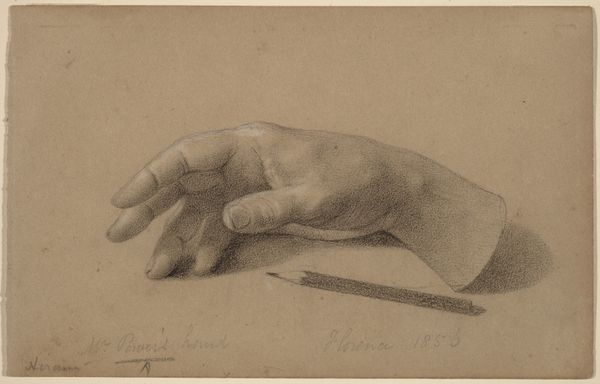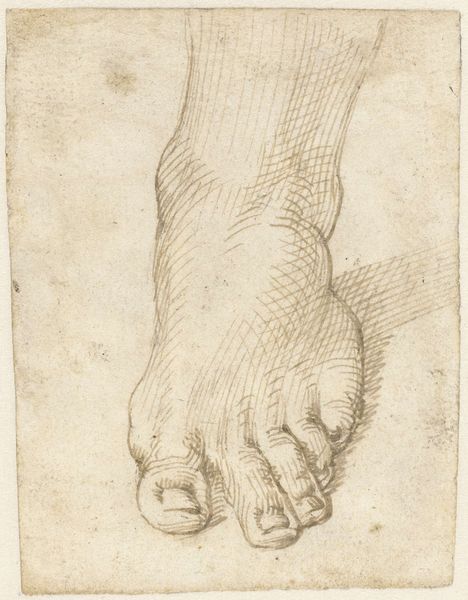
Academiestudie naar een gips van een antiek beeld: detailstudie van een voet 1819 - 1881
0:00
0:00
johannestavenraat
Rijksmuseum
drawing, dry-media, pencil
#
pencil drawn
#
drawing
#
pencil sketch
#
landscape
#
classical-realism
#
figuration
#
dry-media
#
pencil drawing
#
pencil
#
academic-art
Dimensions: height 322 mm, width 197 mm
Copyright: Rijks Museum: Open Domain
Editor: This drawing, made between 1819 and 1881 by Johannes Tavenraat, is called "Academiestudie naar een gips van een antiek beeld: detailstudie van een voet," which translates to "Academic Study of a Plaster Cast of an Antique Sculpture: Detail Study of a Foot." It’s rendered in pencil, and what strikes me is the intensity of the cross-hatching. What’s your take on it? Curator: What I find fascinating is not the art object itself, but the process it represents and the social context in which it was created. Here we see a record of labor, the repetitive mark-making of the pencil on paper. How does the artist's dedication, even the monotony of the task, influence your perception of it? Editor: It makes me consider the academic training the artist would have undergone. It feels almost like a craftsman learning their trade, through repetition and practice. Curator: Precisely. This connects what’s typically considered "high art" to craft, blurring the lines between them. We can consider the artist's labor, the materials used—the pencil and paper—and the function of the work: training, skill development, and conformity to classical ideals, perhaps limiting true individual artistic expression. How does the social context influence the availability of these materials and, subsequently, artistic development? Editor: That's a good point; access to materials wasn’t a given for everyone. This drawing likely reflects a certain level of privilege tied to accessing artistic training at the time. I hadn’t considered it from that perspective before. Curator: And thinking about consumption, what kind of market existed for these academic studies, beyond their initial use in training? Editor: Maybe a small market among fellow artists, or perhaps collectors interested in the artistic process? It makes you wonder about the intended audience and the artwork's perceived value then. I'm now rethinking what qualifies as art! Curator: Exactly! Considering materiality and social conditions allows for such reinterpretations. Editor: This perspective offers such a valuable lens to question ingrained hierarchies and reassess value within art history. Thanks!
Comments
No comments
Be the first to comment and join the conversation on the ultimate creative platform.
